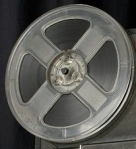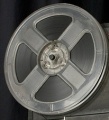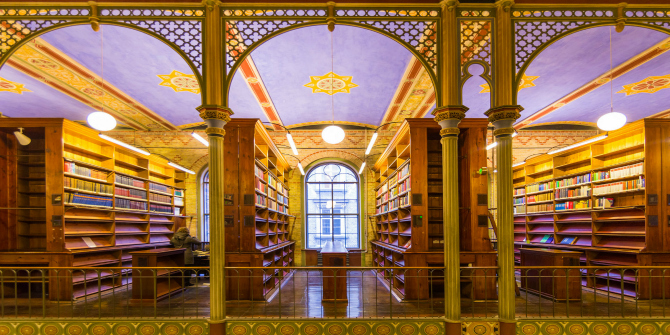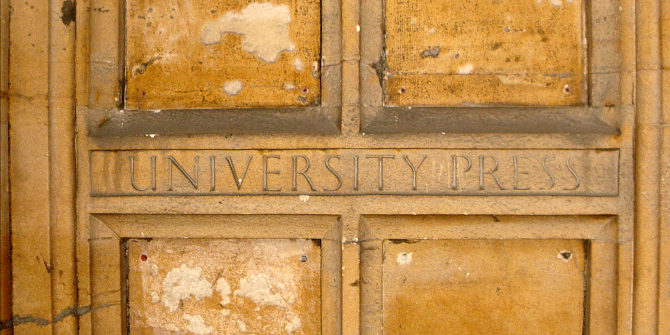

co-edited by Praseeda Gopinath and Monika Mehta
Our listening practices are discursively constructed. In the sonic landscape of India, in particular, the way in which we listen and what we hear is often normative, produced within hegemonic discourses of gender, class, caste, region, and sexuality. . . This forum, Gendered Soundscapes of India, offers snapshots of sound at sites of trans/national production, marketing, filmic and musical texts. Complementing these posts, the accompanying photographs offer glimpses of gendered community formation, homosociality, the pervasiveness of sound technology in India, and the discordant stratified soundscapes of the city. This series opens up for us the question of other contexts in India where sound, gender, and technology might intersect, but more broadly, it demands that we consider how sound exists differently in Pakistan, Sri Lanka, the Maldives, Bangladesh, Bhutan, Nepal, and Afghanistan. How might we imagine a sonic framework and South Asia from these locations? —Guest Editors Praseeda Gopinath and Monika Mehta
For the full introduction to the forum, click here.
To read all of the posts in the forum, click here.
—
The coming of sound in Bombay cinema in the 1930s dovetailed with discussions concerning men and women’s roles in modern Indian society and filmmakers’ efforts to establish the cinema as a respectable medium that was integral to Indian nationalist aspirations. With sound now essential to a film’s diegesis, film producers adjusted narrative strategies and how they aurally and visually presented a character as male or female, such as through voice, language/accent, and music. Christine Ehrick reminds us, gender is “represented, contested, and reinforced through the aural.” What did the addition of sound to cinema mean for presenting fe/male bodies and voices on screen? Scholars such as Laura Mulvey have famously demonstrated how film visual editing can lead to women’s objectification in cinema. The sounds and narrative of Dokhtar-e Lor “The Lor Girl” (1933)—the first Persian-language sound film—extend Mulvey’s argument by letting us hear the early sound film’s role in gendering bodies within the wider socio-political context of colonial modernity, as well as the impact the film would have on later Indian and Iranian cinematic conventions.

Golnar and Jafar discuss love in The Lor Girl (1933), Screen capture by author
Although usually featured in histories of Iranian cinema, The Lor Girl was made in Bombay in collaboration between Iranian scholar and expatriate, Abdolhossein Sepanta, and Ardeshir Irani, film producer and owner of the Imperial Film Company. Irani, who is known as the father of the first Indian talkie and Urdu-language film Alam Ara, was also a prominent member of the Bombay Parsis. Irani sought to establish his Imperial Film Company as a global film center and produced a number of the first talkie films in several other languages in India. Sepanta and Irani decided to collaborate on a Persian-language film for Parsi audiences in Bombay and for distribution in Iran. India was already establishing itself as a major global film power while Iran had not yet invested in the technology necessary to make a sound film.
The film’s first scene opens with a close up shot of Golnar’s gyrating hips and the sounds of a reed flute, oud, tabla, and male singing voices. The camera zooms out, and we see that Golnar is shaking a tambourine and performing for an audience of mostly male patrons in the café. The audience members – as indicated by their clothing – include local men of Lor and Arab backgrounds, which remind us of the café’s location near Iran’s border with modern day Iraq.. The men, as well as an ensemble of male musicians, sit in large circle around Golnar. As Golnar dances and the ensemble plays, we hear the audience clapping and yelling “very good, very good!” in encouragement. Through their jeers and taunts, the film sonically casts the men in the audience as vulgar, and its visual construction of Arabs dovetail with Orientalist aesthetics that Rosie Thomas argues were found in contemporaneous Hollywood, European, and Bombay cinemas. The sonic characteristics of these men that we hear throughout the film also reinforce the one-dimensional Orientalist, racist visual codes; the Arab sheikh’s high-pitched, cackling voice sounds simultaneously evil and weak, while the bandits’ voices cast them as brutish and uneducated.

Golnar negotiates with Qoli Khan, in The Lor Girl (1933), Screen capture by author
When the song ends, Golnar skips around the circle holding out a basket to collect tips from the audience members who oblige her to flirt with them before they hand her money. After a short private conversation between Ramazan and the Arab sheikh in which both men cackle over the sheikh’s plan to visit Golnar in her room at night, the next scene shows another dancing sequence similar to the first – although this time Golnar dances for a smaller group of men in Ramazan’s lair. In both dance scenes, the sonic landscape is simultaneously seductive and threatening, elements reinforced by Golnar’s vulnerable yet enticing positioning and the audience’s leering, eager stares and shouts. The film casts men as voyeuristic listeners and consumers of sound, and through Golnar’s dancing – a role considered and reinforced by the film as disreputable – sound produces Golnar as object for the male listeners’ pleasure. While other contemporaneous Bombay films featured more spectacular song and dance sequences, Hamid Naficy notes that this scene in The Lor Girl still hints at the cabaret and café sequences which later emerged in Indian and Iranian commercial cinemas. This, is turn, demonstrates how cinematic codes – informed by discourses on gender and nation – move and are shared transnationally through co-production and exchange.
Now that cinema included both sound and images, filmmakers drew on elements of music, dancing, and other aspects of existing local performance traditions, such as Parsi theater. Representations of gender in Parsi theater were characterized by flexibility; Kathryn Hansen notes that due to concerns about female actors performing for male audiences and in public in general, female characters were often played by men. The acceptance of cross-dressing – not only in terms of body, but also voice – allowed for fluidity in terms of how femininity and masculinity were visually and aurally represented. Yet sound cinema did not allow the same flexibility in terms of gender performance due to aesthetic concerns, as well as sound cinema’s intersection with national and modernist discourses. While women’s voices on radio and records became increasingly commonplace and accepted in Bombay in the 1930s, the audiovisual experience that the sound film provided presented a challenge. Cinema was still not widely regarded as a “respectable” medium, and many of Indian cinema’s early actresses came from what were considered questionable backgrounds.
The trajectory of Golnar and Jafar’s characters encapsulates this tension between gender identities and modernity. Jafar wears a military uniform and mustache associated with the “pre-modern” Qajars. Throughout most of the film while in Iran, Golnar wears long braids and a long dress, clothing that indicates that Golnar hails from the “chaotic” Lorestan province, and that mark her as traditional and backwards in the context of colonial modernity.

Jafar and Golnar in The Lor Girl (1933), Screen capture by author
Although Jafar rescues Golnar initially, the film ultimately casts Golnar as more capable of outsmarting the bandits. Golnar saves Jafar from the bandits several times throughout the film, moments that cast her as strong and brave similar to the virangana (warrior woman) trope that was widely circulated and popular in early 20th century Indian popular culture which Rosie Thomas notes in Bombay Before Bollywood “implied gender ambivalence and multiple modes of femininity” (111).
Golnar’s high-pitched voice and regional Kermani accent associate her with the countryside – especially in contrast to Jafar’s sophisticated, cultured Persian. But her voice’s firm and confident presence resonates across the soundtrack. In the scenes in which she searches for and saves Jafar, she calls his name repeatedly, sonic moments that emphasize her role as Jafar’s rescuer. To negotiate with and escape from the bandits in other scenes, Golnar uses what seems to be her familiarity with the bandit and countryside way of life, as well as her voice; she bravely yells at the bandits and Ramazan’s henchmen while in captivity. At one point, pretending to seem frightened and intimidated by her captors through fake tears and whimpers, Golnar manages to use bandit’s whip against him and steal his horse. Golnar escapes captivity another time when she uses her brazen and coy voice and speaking style to trick Qoli Khan into letting her leave the cave to supposedly find and help capture Jafar.
Yet Golnar and Jafar experience significant transformations by the end of the film and upon their arrival in Bombay. Happy piano music plays on the soundtrack as the film shows us buildings and monuments of modern Bombay. Afterwards, intertitles inform us of the spectacular changes that have taken place in Iran while Jafar and Golnar have been in Bombay now that a new shah has come to power. In the next scene, we are in the couple’s grand living room of their house in Bombay; a servant cleans their grand staircase while we hear and see Golnar at the piano. Jafar enters the room and notes how well she has learned to play. While initially positioned similar to the virangana, Golnar now wears a European-style dress and short haircut. In Bombay Cinema: an Archive of the City, Ranjani Mazumdar discusses how in emerging Indian nationalism, “Victorian ideology entered into a comfortable alliance with Indian myths to reinvent the “virtues” and “purity” of the Indian woman,” casting her as associated with the bourgeois domestic space of the home, and interested in European-associated pursuits such as the piano (82).

Jafar and Golnar arrive in Bombay, in The Lor Girl (1933), Screen capture by author
Meanwhile, Jafar, who appeared inept at his role as soldier and potentially effeminate, now is clean-shaven and wearing a Pahlavi hat and suit. Golnar’s near silence in this scene and attentive listening contrasts dramatically with the presence of her voice in the previous scenes when she argued and negotiated with the bandits, sang solos, confidently flirted with Jafar and talked with him about the differences between notions of love in the modern city and the countryside. Now, nearly silent in terms of her voice, but providing musical accompaniment to Jafar’s nationalistic song through the piano, Golnar demonstrates the more limited essentialized femininity of the new, modern, middle-class woman, and one characterized by its association with culture. Later, reading the newspaper together, Jafar suggests that they return to Iran now that it has become modern like Bombay. Golnar quietly listens to Jafar, and assents with his desire to return.

Jafar and Golnar read the newspaper in The Lor Girl (1933), Screen capture by author
The Lor Girl’s importance in Iranian cinema histories – and its near absence historiography of cinema in India – is reflective of how national cinema frameworks limit how we understand the early sounds of Iranian and Indian cinemas. The film was produced at a time when national cinema was not yet articulated with a specific language and when transnational elements played a key role in film production. In addition to its role in sonically gendering bodies, The Lor Girl demonstrates the sound film’s role in participating in the association of language and nation.
—
Featured Image: The Lor Girl (1933) Film Poster
—
Claire Cooley is a PhD student in the Department of Middle Eastern Studies at the University of Texas at Austin. Her research interests center on overlapping Middle East and South Asia film histories. Claire’s dissertation project traces connections between Egyptian, Iranian, and Indian cinemas with a focus on the 1930s-1960s, and uses sound as a framework to capture the dynamics of cinematic circulations across this contiguous region. In 2010, she received her BA from Tufts University, and from 2010-2013 she lived in Cairo, Egypt where she pursued a project translating, mapping, and blogging about graffiti during the 2011 Egyptian Revolution. Claire also teaches Persian and Arabic.
—
 REWIND!…If you liked this post, you may also dig:
REWIND!…If you liked this post, you may also dig:
Fade to Black, Old Sport: How Hip Hop Amplifies Baz Luhrmann’s The Great Gatsby– Regina Bradley
Quiet on the Set?: The Artist and the Sound of a Silent Resurgence– April Miller
Play It Again (and Again), Sam: The Tape Recorder in Film (Part Two on Walter Murch)– Jennifer Stoever






 Still, it’s complicated, to be sure, made even more so by the fact that I come from a strong military family–of all Comanche families, Tahmahkeras rank second in having the most veterans and I’m proud of that, I’m proud of my relatives. Still, there’s something about the blasts hovering through the air and over our homelands. There’s a reminder, of imagined sonic memories of weaponry used against our Comanche ancestors, like “the world’s first repeating pistol, the” “‘Walker Colt’ .44 caliber revolver” that the Comanche Paul Chaat Smith says was “designed for one purpose: to kill Comanches.” As a Comanche elder recently told me in response to Fort Sill’s artillery explosions, “it’s not easily something you can overcome because it brings back the memories of over 150 years ago,” of what happened to the people.
Still, it’s complicated, to be sure, made even more so by the fact that I come from a strong military family–of all Comanche families, Tahmahkeras rank second in having the most veterans and I’m proud of that, I’m proud of my relatives. Still, there’s something about the blasts hovering through the air and over our homelands. There’s a reminder, of imagined sonic memories of weaponry used against our Comanche ancestors, like “the world’s first repeating pistol, the” “‘Walker Colt’ .44 caliber revolver” that the Comanche Paul Chaat Smith says was “designed for one purpose: to kill Comanches.” As a Comanche elder recently told me in response to Fort Sill’s artillery explosions, “it’s not easily something you can overcome because it brings back the memories of over 150 years ago,” of what happened to the people.

 REWIND! . . .If you liked this post, you may also dig:
REWIND! . . .If you liked this post, you may also dig: This podcast focuses on the sonic landscapes of unwelcome which women and femmes of color step into when we walk down the street, take the bus, and navigate public and professional spaces. Women of color must navigate harassment, violent, and sexually abusive language and noise in public space. While walking to the market or bus, a man or many might yell at us, blow us an unwanted kiss, comment on our bodies, describe explicit sexual acts, or call us “bitch.” The way that women and femmes do or do not respond to such unwelcome language can result in retaliation and escalated violence. A type of harm reduction, women often wear headphones and listen to music while in public for the specific purpose of cancelling out the hostile sonic landscape into which we are walking. The way that women and femmes make use of technology and music as a tool of survival in hostile sonic landscapes is a form of femme tech as well as femme defense. What sort of psychological and emotional effect does constant and repeated exposure to abusive noise have on the minds and bodies of women of color?
This podcast focuses on the sonic landscapes of unwelcome which women and femmes of color step into when we walk down the street, take the bus, and navigate public and professional spaces. Women of color must navigate harassment, violent, and sexually abusive language and noise in public space. While walking to the market or bus, a man or many might yell at us, blow us an unwanted kiss, comment on our bodies, describe explicit sexual acts, or call us “bitch.” The way that women and femmes do or do not respond to such unwelcome language can result in retaliation and escalated violence. A type of harm reduction, women often wear headphones and listen to music while in public for the specific purpose of cancelling out the hostile sonic landscape into which we are walking. The way that women and femmes make use of technology and music as a tool of survival in hostile sonic landscapes is a form of femme tech as well as femme defense. What sort of psychological and emotional effect does constant and repeated exposure to abusive noise have on the minds and bodies of women of color? Image credit:
Image credit:  Image credit:
Image credit: 